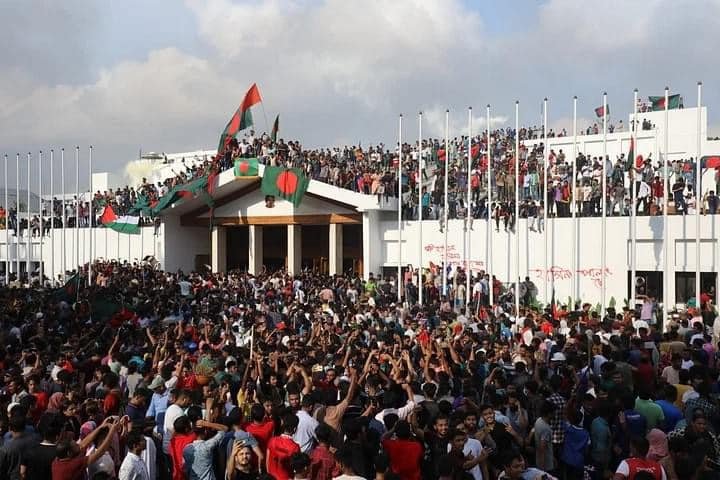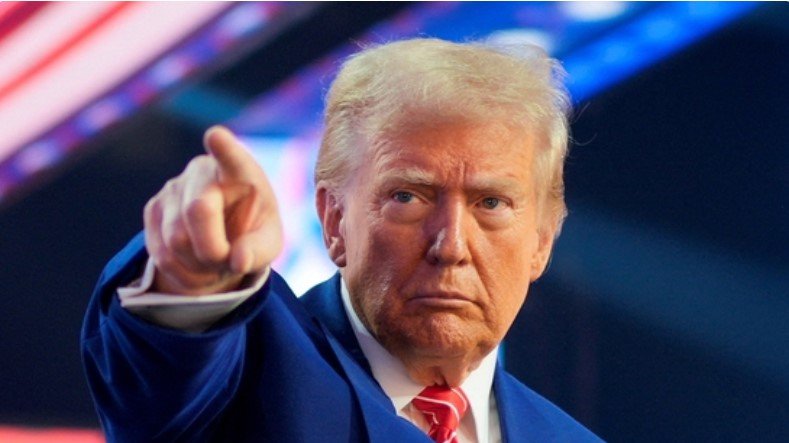
Bangladesh has experienced one of the most extreme political transformations in its history in the last year, after a massive popular revolution that started in July 2024 and still continues to shape the nation’s future.
The Spark: Student-Led Protests Spark Nation-Wide Movement
The unrest was ignited in mid-2024 when student protests against quota reforms rapidly escalated into a broader movement against government corruption, economic mismanagement, and authoritarianism. By early August, the major cities were gripped by mass protests, with Prime Minister Sheikh Hasina’s residence and office in Dhaka stormed. Faced with unprecedented public pressure and breakdown of security, Hasina resigned on August 5, 2024, and flew into exile in India, marking the end of her decade-long regime.
A Constitutional Crisis and the Emergence of a Caretaker Government
This sudden exit by Hasina created a constitutional crisis, since there were no clear directions in the Bangladeshi constitution on the formation of an interim government or dissolution of parliament in such a situation. The military, under the leadership of Army Chief Waker-uz-Zaman, reacted by declaring the imposition of an interim government. Nobel-winning economist Muhammad Yunus took oath as Chief Advisor on August 8 to lead the nation through a transition.
Reform, Reprisal, and Unrest
The caretaker government quickly set out on a broad agenda of reforms, forming commissions to reform the judiciary, the electoral system, the police, and the constitution, among others. The transition was, however, tainted by violence, revenge attacks on the supporters of the deposed Awami League, and a collapse of law and order. Propaganda campaigns, particularly against the minority communities, destabilized the environment further, as the police took time to overcome months of instability.
Economic troubles also contributed to the crisis: Bangladesh suffered its worst 40-year floods in September 2024, which resulted in impending bank collapse, runaway inflation, and growing public anger at IMF-imposed subsidy removals.
Threats to Stability: Political Rivalries and Extremism
Six months following the removal of Hasina, extremism and violence continued, and more than 1,500 arrests were made in a campaign against mob violence and extremist elements. The Yunus caretaker government came under increasing pressure from both the revived BNP and newly emerging student political movements, calling for early elections and accountability for human rights abuses in the past. The military’s increasing concern at the caretaker government’s course further contributed to the uncertainty.
A Fragile Way Forward
Until mid-2025, Bangladesh politics is vibrant and unstable. The caretaker government has people’s and international backing but its capacity to realize promised change and maintain stability is in doubt. Demands for elections are being increasingly made by people, but disagreements on timing and preconditions to be fulfilled continue.
The threat of a slide back into violence, militant revival, and regional instability—added to by spillover from the conflict in Myanmar—is omnipresent.
Most Bangladeshis have labeled the defeat of Sheikh Hasina as a “second liberation”, reflecting the widespread yearning for revolutionary transformation. Yet, people’s expectations are two-edged.
Bangladesh is at a turning point: nobody can be certain whether the caretaker government can surmount these obstacles and set the stage for a democratic and stable future.
The next few months will decide whether the potential of the 2024 uprising is realized in the form of enduring change or additional instability.

